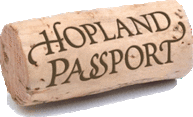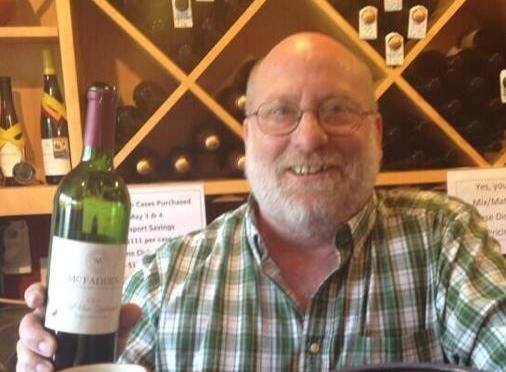

John On Wine – Coro, Crush, Coro and Crush
Originally published in the Ukiah Daily Journal newspaper on Thursday, April 2, 2015
Crush Italian Steakhouse in Ukiah, Coro Mendocino, Crush, Coro, sometimes it seems that I am writing my column about one or the other with a frequency that squeezes other worthy subjects out. There are other great restaurants in Ukiah; Patrona, Ritual, and Oco Time come immediately to mind; but Crush is uniquely suited to host spectacular chef’s wine dinners, with their private dining room and top notch kitchen and front of house team. Anderson Valley is well known as a place where premium Pinot Noir and Alsatian variety white wines are born; inland Mendocino grows some terrific Cabernet Sauvignon and Sauvignon Blanc, Bordeaux varieties; but Coro Mendocino is the county’s flagship wine, and the cooperative element to the program has me writing about these Zinfandel-centric blends made by different great winemakers with deserved prevalence.
Guinness McFadden makes a Coro wine and, fortunately for me, he was overwhelmed with meetings and sent me to sit with the Coro winemakers to taste barrel samples of the 2013 Coro wines being produced by Barra, Brutocao, Clos du Bois, Golden, Graziano, Parducci, Testa, and, of course, McFadden, on March 18.
I tasted through the wines in January, for the second of four blind tastings, with the winemakers, each giving notes of unvarnished constructive criticism on each wine, so adjustments could be made. I tasted them again yesterday, for the third group Coro winemaker blind tasting, and the tweaks made in the intervening two months had every one of the wines positively singing. As an example, Guinness reduced the blend of his wine from 70% Zinfandel to 67%, and increased the Syrah in his blend from 20% to 23%, with the remaining 10% unchanged and given over to Petite Sirah. That small change improved the wine remarkably, providing balance and integration.
Doubly fortunate, I was also able to blind taste the finished, bottled, but not yet released, 2012 vintage Coro wines, to help judge their weight, in advance of the multi course 2012 vintage Coro Release Party at dogpatch WineWorks in San Francisco on June 19 (tickets would make a perfect Father’s Day Gift). Again, the wines of Barra, Brutocao, Clos du Bois, Golden, McFadden, Parducci, Ray’s Station, and Testa all tasted wonderful, each their own unique wine, and vintage different from the just tasted 2013 Coro wines.
Triply fortunate, that same evening, I attended a Chef’s Wine Dinner at Crush Italian Steakhouse in Ukiah, featuring incredible dishes prepared by Chef Jesse Elhardt and his team, and the lineup of 2011 vintage Coro wines.

Rusty Martinson of Testa, Owen Smith of Barra, Hoss Milone of Brutocao, and Dennis Patton of Golden. (photo by John Cesano)
The evening started off with passed Gazpacho Shooters of San Marzano (the best) tomato, olive oil, sherry vinegar, and Malden salt; which were the best gazpacho I have ever tasted, and paired perfectly with the McFadden Sparkling Cuvee Brut.
After the ‘meet & greet’ appetizers, the lucky 70 attendees at the sold out dinner moved into the private dining room and took seats. Four Coro wineglasses, appetizer, and main course plates were in place, and the first course wines were poured, all 2011 vintage Coro wines, from McFadden, Parducci, Clos du Bois, and Testa. These four ‘lighter’ 2011 Coro wines were substantial, as was the food from the kitchen: Crush Antipasto with four assorted cured meats, four assorted cheeses, cornichons, olives, peppers, crostini, olive oil, and course mustard; Spicy Lamb Balls with Calabrian chili from Italy, romesco with toasted almonds and hazelnuts, feta, mint, and micro basil; and Seared Day Boat Scallops with a rosemary fig jam, bacon couscous, and a baby kale salad topped with white Champagne vinaigrette.
I Love the lamb meatballs, they were incredibly flavorful, and paired beautifully with sips of each of the four Coro wines from the flight. One of the cheeses, a Parmigiano-Reggiano, also was a particular delight when paired with the wines. The scallops, fresh from San Francisco the day before, was a spectacular dish, but honestly would have paired better with the lighter ‘meet & greet’ wines served earlier, as the Coro wines overpowered the delicious but delicate flavors of the dish for me, but easily resolved as I just ate the scallop without the wine, and loved them.
First plate cleared, wines dumped, new wines were poured, the 2011 Coro wines from Brutocao, Barra, Fetzer, and Golden, and the second food course to impress was brought out; Roasted Whole Filet Tenderloin with spiced crust, roasted mushrooms, a board sauce, and red wine demi-glace; One Hundred Layer Lasagna of fresh pasta, ten hour ragu, béchamel, tomato, reggiano, and fresh herb; Roasted Zucchini Ribbons with garlic chip, basil pesto, cherry tomato confit, and olive oil; and Potato au Dauphinoise with herb infused cream and cheddar bread crumb.
Sips of each of the five wines, I held onto some McFadden Coro, with bites of each food creation, were spectacular. The tender tenderloin of certified Angus beef, a perfect medium rare, cooked in butter, with a peppercorn medley crust was as good as meat gets; The lasagna was 100 layers of red, white, and green, representing the colors of the Italian flag, with the Bolognese ragu providing the red, béchamel bringing the white, and every third layer made from a basil infused pasta for the green; the roasted zucchini ribbons were delicious and provided a bright note for the second course; with the potatoes, made from a 1906 recipe, featuring sliced potatoes infused overnight in an herb cream, a must have seconds dish for me.
Dessert was a Flourless Valrhona Chocolate Cake served with house made toasted almond gelato, chocolate crumb, and spun sugar; and paired with a choice of McFadden Late Harvest Riesling or Brutocao, Dunnewood, or Parducci port. This might just be the best dessert I have tasted at Crush yet. I went with the Riesling, which paired perfectly, once again, with Jesse’s food.
All of the night’s wines were wonderful, and there was quite a bit of talk about how good the 2011 vintage Coro showed. Initially thought a ‘weak’ vintage, every Coro was a stellar food wine, and a testament to each winemaker’s skills and a great showing for the Coro program. Without exception, the 2011 Coro wines were delicious, lovely, and showed great finesse, balance, and flavor, each showing differently that intensity of flavor is not limited to over oaked, high alcohol, fruit jamb bombs. These were elegant wines, all.
The next Chef’s Wine Dinner at Crush will feature the wines of Graziano, and will be held on Wednesday, May 20; for tickets call (707) 463-0700.
The next Coro dinner will be on Friday, June 19, at dogpatch WineWorks in San Francisco, when the 2012 vintage Coro Mendocino wines are released. Tickets are $700 per couple, and include a gourmet multi course meal, paired with all eight new Coro wines, and each ticket includes the full collection of 2012 vintage Coro wines to take home. There will also be complimentary valet parking for the dinner, which in San Francisco is a huge bonus. For tickets, call Sip! Mendocino in Hopland at (707) 744-8375, and tell them you want to sit at a McFadden table if you would like to hear Guinness tell a five minute story about an Irish priest and a bike, or be less than dazzled by stupid magic tricks by me. Seriously, I have attended two of these dinners and they are the best wine dinner events you can attend, if you love red wine or Mendocino County. With Father’s Day falling on June 21 this year, tickets to this June 19 dinner really are a perfect gift for any wine loving dads.
It isn’t every day that you get to taste a lineup of an entire Coro vintage, doing so with a great dinner makes it all the better experience. Getting to taste three entire vintages in a day, 24 great wines in all, pretty much makes me the most fortunate tasting room manager and wine writer in California.


































